The territories
It is almost as though the Roman legionaries had learnt the art of cooked ham from the Gauls, from the Lombards or from other Germanic peoples that became part of the Roman Empire and let this tradition take root in northern Italy. The mortadella, named as early as 1661 by Cardinal Farnese, is the oldest recipe in Bologna. The origin of coppa, like that of pancetta, dates back to Roman times.
Each speciality has come to us following a line that goes back in history. Its recipe is interwoven with local events and tales, is part of popular traditions and strict disciplinary regulations.
Our aim was to pay homage to these productions and to the respective territories In which they were born by dedicating an actual ode to them. A journey through time and places where our gourmet charcuterie is produced.
Browse the odes to learn more about the 5 territories where our specialities originate from.
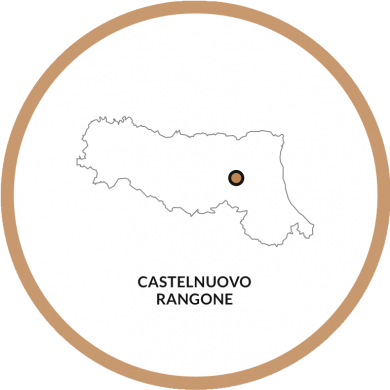

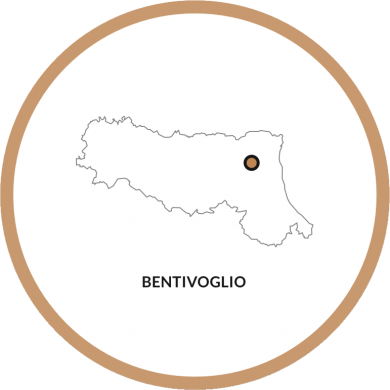
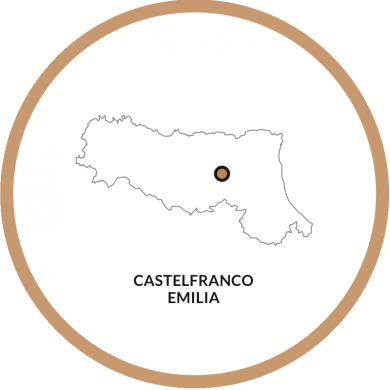

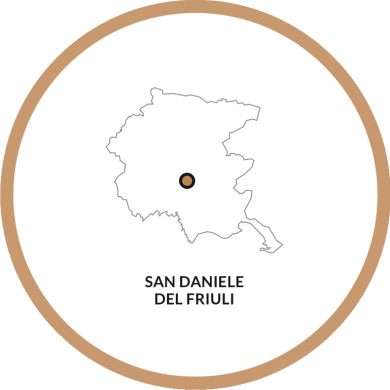
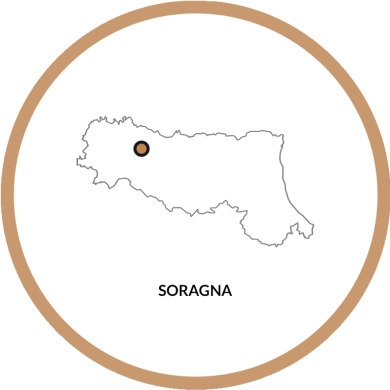
The salami
The cold cut is an ode to getting together and to balance, a mosaic of fine fresh meats and scintillating fats.
The shoulder, the loin, the cuts of the noblest parts, the firm fat of the cheek, the tender fat of the lardons, each ingredient makes its own particular contribution to the harmonious wonder of the mixture.
And then the salt and the spices, a fragrant gift from the East to Italian cold cuts...it is not a single mixture but infinite variations of mixtures, family recipes handed down from generation to generation and kept by our “chef”: the spicer
Like a skilful turner, the caser grasps one of the very delicate natural guts
---and voilà, the salami takes shape, a tantalising inkling of what is to come.
The hands of our trussers dance gracefully around that cocoon, creating elegant and expert interweavings of twine. Each product is different from the others and together leaves a faithful trail of memories rooted in certain places. Each one is perfect in its perfection and ready to mature in harmony.
The cooked ham
The most ancient cooked ham known is the smoked ham of Westphalia. It is almost as though the Roman legionaries had learnt the art of cooked ham from the Gauls, from the Lombards or from other Germanic peoples that became part of the Roman Empire and let this tradition take root in northern Italy.
What we know for certain is that today the best cooked ham is the one that uses Italian pork leg displaying the “PP” symbol (indicating compliance with the specifications for the finest protected raw hams).
The other big secret is the seasoning sauce. Just like the home-made roasts, we make them only using natural spices and aromas (hardly anybody does it the way we do today!): cinnamon sticks, cloves, fennel seeds, mace...infused with the knowledge of our spicer, following family recipes. The “home-made” seasoning fills the air, it is everywhere: it penetrates into the delicious legs, gently rubbed in until they are evenly absorbed. The ham is then placed “in a pan” where it expands thanks to the steam that gently cooks it for almost a whole day, leaving its softness unaltered.
The Mortadella
Named as early as 1661 by Cardinal Farnese, mortadella is the oldest recipe in Bologna. Made with quality pork and fine lardons, a marriage made in heaven that we at Villani celebrate daily. The finely ground lean parts create an even mixture, a weave of soft pink threads.
The lardons have meanwhile followed their own path. Perfect cubes are created from a uniform block turned white and firm by "scalding".
Now we can encircle the pink weave! Our spicer sanctions the union, spreading the mixture with a feast of spices: salt, pepper, pistachio and fresh garlic.
The expert hands of our casers push the mixture into delicate natural gut casings. The oldest one is made of ox bladder, which is capacious and naturally irregular, thereby giving each mortadella its own unique shape. After nearly a whole day of heating in the stove, the mortadellas are ready. Brick red, they give off an unmistakeable fragrance.
Coppa and pancetta
The origin of coppa, like that of pancetta, dates back to Roman times. The initial phase of processing is, still today, the same: alternating salting and cool resting in the cellar. Our plant in Castelfranco actually resembles a tailor’s workshop, with small “customized” areas, each one designed for each single product.
Casers and trussers sit at the round table to case and truss the coppa. The casers gently guide the coppa inside the natural gut casing and then tie the “mouth”. Three trussers secure the newly-formed coppa: the first winds the length while the second ties along the short side. The third then gives a personal touch, creating -with the needle- secure knots that hold it all together during the maturing stage.
The pancettas are formed into a wide variety of creatures: stretched out, rolled up, larded, cut ... Here we see the Black Pepper pancetta, one of our flagships. After spreading a film of oil inside it, our spicers immerse it in a bed of fine ground black pepper which gives it its unmistakeable colour and fragrance.
The “coppata” marries a coppato to become one flesh. For the “steccata”, actual “retrussers” are required who fold it in half and hand stitch the side and then press it firmly between two beech wood slats.
And now it's time for the cellar. The coppa and pancetta meet...their appearance is incredible: tapered cylinders and thickset dark rolls, and large pink “books” sleep next to each other, narrating the wonderful exuberance of the cold cuts culture of our country.
The Parma ham
Everything starts with the raw material, the best raw material: only legs of fresh controlled origin and “of a certain weight” are suitable for the deft hands of our salters and can be matured for up to 30 months, just as we do at Villani.
The “perfect” legs are combined with the other unique ingredient of DOP Parma ham: white sea salt. The land thus meets the sea, producing one of the most incredible natural wonders for us to enjoy. The salter “brushes” the leg: Salting is followed by resting; then further salting. The slow action of nature is interwoven with the quick and measured work of the human hand: the agile knife of the preparers, the skill of the seasoners.
At the stroke of the twelfth month, the hams can finally receive the regal mark of the Consortium but we leave them to mature for longer, for up to another two years, our cellar keepers lovingly watch over them: they observe them, ensure they remain separated from each other and breathe in their aroma with the wisdom of a sommelier.
As soon as they are ready, they are selected, one by one. Each of them is in fact a subtle “dedication” to the customer it is intended for: it is sweet and soft or lean and matured, flavoured only on the one side or reseasoned, it is deboned and of the required weight, meat from the upper or lower rib cage. It comes from either the right or the left thigh...
About this topic, you can ask any question…. we are fully qualified experts.
San Daniele ham
The birth of the famous “whole leg ham” dates back to the VI century B.C., when San Daniele was inhabited by the Celts.
To begin with, there is a noble raw material: fine Italian leg of pork to which, as Friuli tradition demands, the trotter remains attached. The expert hands of our salter spread white sea salt over the tapered thighs. They then rest in the calm darkness of the cellars for 4 months. Only then are they ready to meet the last essential ingredient in their preparation: the wonderful air of San Daniele.
We then take them to the top floor of the plant where large vertical windows are ready to welcome the caresses of the winds brought in from the Alps and the sea. It is the happy combination of these natural elements that enhances the harmony of the aromas. They are left there for at least 13 months to warrant the Consortium brand.
Our finest hams are kept for longer, caressed by the wind, for up to 24 months: the cyclical alternation of the seasons enhances their flavours and aromas, just as in olden times.
Culatello
The finest of Italian charcuterie is crafted following an age-old tradition from Parma's low-lying area. A mouth-watering delicacy that comes from the foggy climes of the Po Valley. This FINE CUT is hand-trimmed, lightly salted, gently cased, and then left to age for approximately 18 months in the humid embrace of the cellars that form part of the Soragna museum.
The terracotta bricks in the cellar absorb and releases the meat's aromas, gradually enriching the flavour of the final cured product. Towards the end of the process, an expert charcutier gently taps the form with a special hammer, listening for an answer. Nature has taken its course.